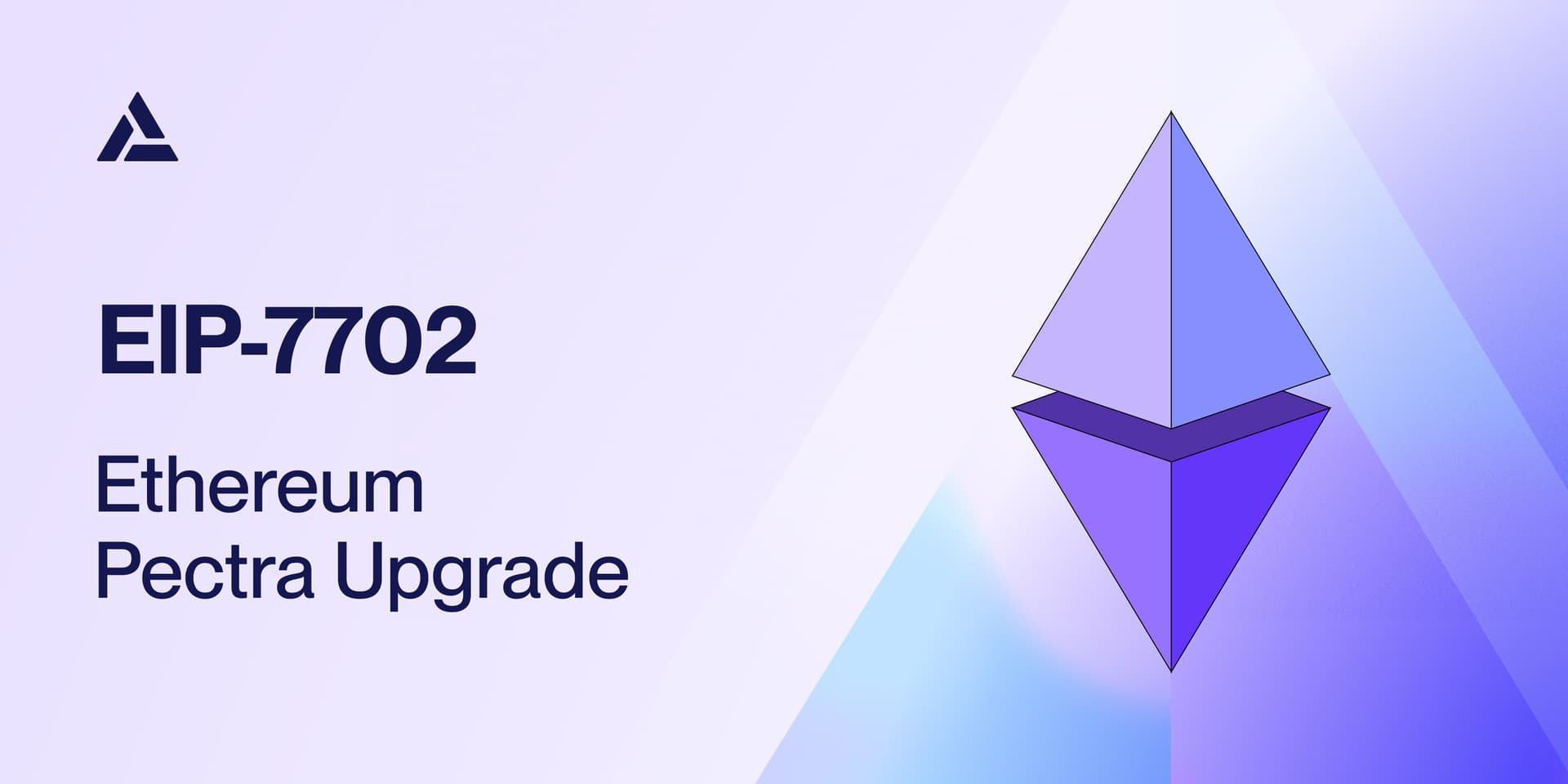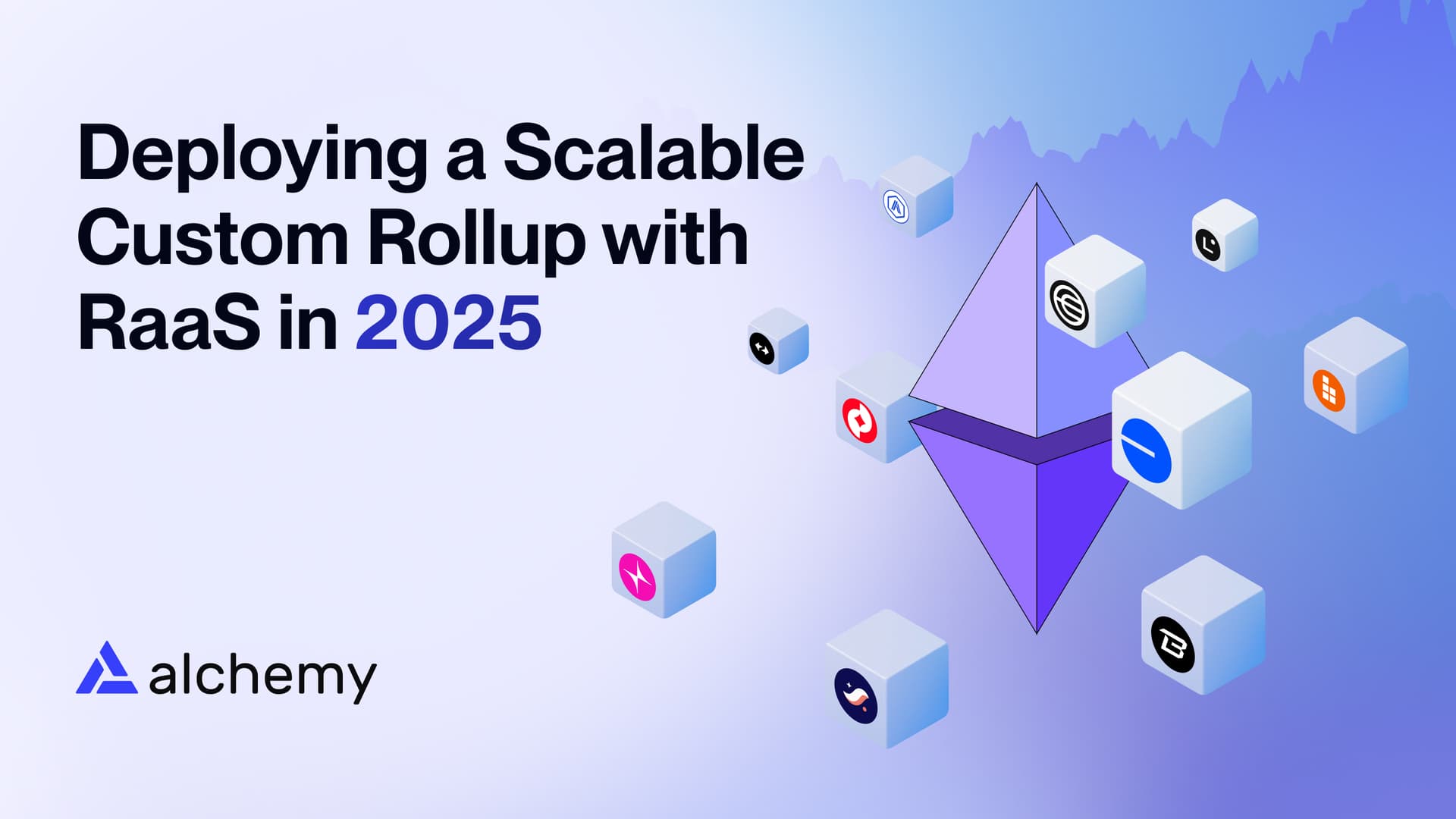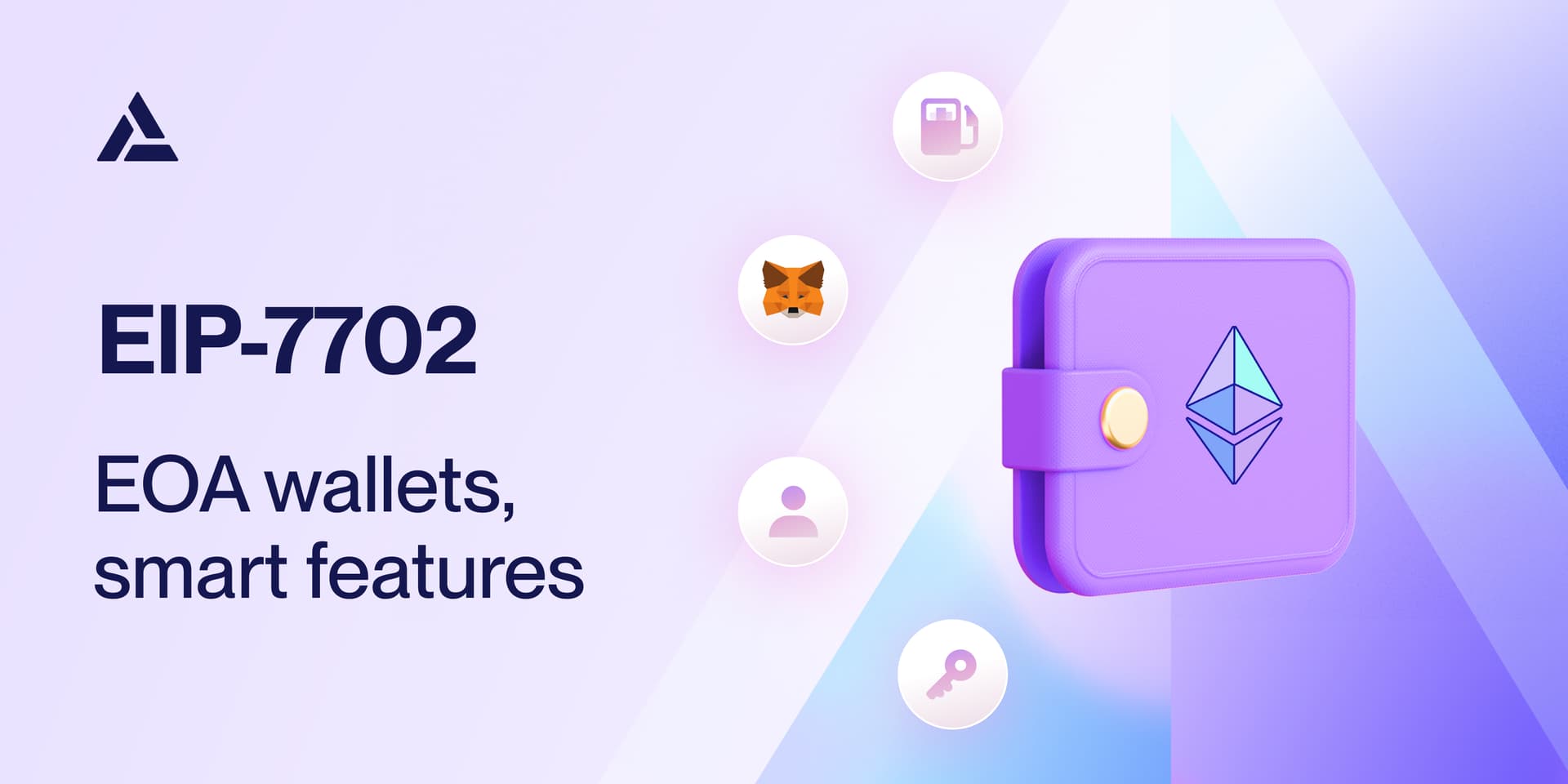EIP-7702: Quick Integration Guide for Ethereum Developers Post-Pectra
Authors: Lisa Ma, Usman Asim

TL;DR? We get it. Check out our series on X for quick explainers and demos.
Ethereum's roadmap towards mainstream crypto adoption is making waves with EIP-7702, included Pectra hardfork. This upgrade marks a pivotal moment in Ethereum’s journey toward account abstraction, a breakthrough designed to make onchain experiences smoother, smarter, and more accessible. Specifically, EIP-7702 enables Externally Owned Accounts (EOAs) to use smart contract account features.
As developers, you’re the architects of the next generation of onchain innovation, and we’re here to ensure you’re equipped to leverage EIP-7702 to its fullest potential. As the builders of infrastructure powering millions of onchain applications, we’re here to help guide you.
This is the first post in our deep-dive series into EIP-7702, tailored specifically for application developers like you. Together, we’ll explore what makes this proposal so impactful, how it works under the hood, and the key technical considerations to help you decide how (and why) to integrate these cutting-edge features into your applications. Let’s build the future—one upgrade at a time.
The tl;dr:
EIP-7702 enables EOAs to delegate control to smart contract accounts that can execute code directly from their addresses
It is compatible with the prevailing AA standard, ERC-4437, so existing wallets can become smart contract wallets without creating a new address and transferring assets
For users, it will enable web2-like features, including account recovery and passkey sign-in for easier authentication, and web3-benefits like gas-sponsored transaction fees and paying for gas in any token, not just ETH
Current State of Ethereum Accounts
In May 2024, Vitalik Buterin introduced EIP-7702, a proposal that can fundamentally change how Ethereum accounts work. What started as a 22-minute draft before an all core dev call is now included in the Pectra upgrade. EIP-7702 represents a crucial step toward full account abstraction while solving immediate usability challenges.
But in order to understand where Ethereum is headed, we need to understand its current architecture.
Today, Ethereum users rely on two types of accounts: externally owned accounts (EOAs), controlled by private keys, and smart contract accounts (SCA), which execute code directly:
Externally owned accounts:
Can initiate transactions
Cannot execute code directly from their address
Limited to basic operations
Smart contract accounts:
Can execute code
Cannot initiate transactions
More flexible and programmable
The goal of EIP-7702 is to merge these two by letting any account act like a smart contract. By enabling EOAs to execute code directly from their address, Ethereum developers can build Web2-caliber UX onchain, with features including:
Session keys
Social recovery for accounts
Authentication mechanisms that don’t require a seed phrase
And batching multiple actions into a single click
Here’s what you should know about how EIP-7702 works.
What to know about EIP-7702 & ERC-4337
EIP-7702 doesn’t replace Ethereum’s existing AA standard, ERC-4337. EIP-7702 was designed to be complementary ERC-4337 and make it easier for those account abstraction features to reach users. But ERC-4337 does have one limitation:
It required new wallet creation because it’s not backwards compatible with EOAs
EIP-7702 removes this limitation without deeper changes to the EVM’s consensus logic:
Uses existing wallets
Requires no new accounts or migrations
Fits perfectly with ERC-4337’s infrastructure
Existing EOAs simply delegate smart contract logic via a delegation designator
Execution flow for EIP-7702
EIP-7702 relies on a clever delegation mechanism which relies on users to provide authorization for executing smart contract code. This authorization is permanent until explicitly revoked by the user, meaning users trust that the code they are authorizing isn’t malicious.
The execution flow is as follows:
Setup: EOA decides to delegate control to a smart contract wallet
Validation: System checks the delegation is properly signed
Execution: EOA receives smart contract capabilities
Cleanup: If EOA decides to revoke smart contract control, another 7702 transaction must be sent to set delegation back to 0.
EOAs are enabled to act like a smart contract account by storing a delegation designator. This designator is a special code, 0xef0100 || address, where the address points to a smart contract that contains the desired feature or action.
The delegation designator uses the banned opcode 0xef to distinguish it from regular data, ensuring that code execution operations load the code from the designated address.
When a transaction is sent to the EOA, the EOA executes the code at the designated address, gaining the functionalities of a smart contract account.
Adoption and security considerations for application developers
The road to adoption of EIP-7702 has one main dependency: wallet providers. Because wallets are upstream of applications, without wallet support, the features enabled by EIP-7702 cannot be leveraged by application developers and their users.
EIP-7702 also presents a different security model compared to smart contract accounts. Primarily, EIP-7702 accounts retain their original EOA private key, which can override smart account security rules.
How you integrate with the wallet functionality enabled by EIP-7702 should depend on a few factors: the development stage of your application, the type of users you target, and how much flexibility you need when deploying your application across multiple chains.
For developers with existing users and embedded wallets
If you already have an embedded wallet, you're in luck. We will help you manage different user types through our smart accounts:
Existing EOA users can upgrade to ERC-4337 accounts
New users can start directly with pure ERC-4337 accounts
The system will support both smart EOAs (EOA+7702) and pure ERC-4337 accounts simultaneously
For developers that haven’t yet deployed their application
For new apps starting fresh: While ERC-4337 and EIP-7702 both enable account abstraction, they serve different needs in modern blockchain applications.
ERC-4337 offers pure smart contract accounts with maximum programmability, extensive transaction customization, and established tooling, making it ideal for single-chain applications and most multi-chain applications where account functionality is paramount.
In contrast, EIP-7702 provides a hybrid approach that lets accounts function as both EOAs and smart contracts, enabling seamless cross-chain compatibility and consistent addresses across networks while requiring less initial gas cost since no immediate contract deployment is needed.
Choose ERC-4337 when:
Deep account programmability is a core requirement
You are building a multichain app but do not need the flexibility of using an EOA on some chains and an SCA on others
Gas costs aren't a primary concern
You need extensive transaction customization
You want to leverage existing 4337 infrastructure
Choose EIP-7702 when:
You’re building a multichain app and consistent addresses across networks is a key requirement
Initial gas costs are a concern
Backward compatibility with EOA infrastructure matters
You want flexibility to start simple and upgrade over time
The key advantage of EIP-7702 is its flexibility: you're not forced to choose between EOA and smart account capabilities, making it particularly valuable for applications needing to interact with both traditional and modern blockchain infrastructure while planning for cross-chain expansion.
For apps working with external, third-party wallets
Many of the most widely-used wallets, like MetaMask, are planning to incorporate smart wallet functionality this year. Here are some topics for you to explore:
Batching: the ability for a single authorization to perform multiple actions atomically, like on DEXs where users approve an ERC-20 and then spend that approval
The risks of delegation
Consider using our SDK to simplify external smart wallet connections
Additional considerations
For application developers that decide to upgrade existing EOAs using EIP-7702 and want to use all of the features enabled by 7702, you’ll need a relayer. While there are different relayer architectures, our recommendation is to use 4337 bundlers because:
They provide standardized interfaces for relaying;
Include built-in paymaster systems;
Ensure forward compatibility, and
Can support censorship resistance through a public mempool
If you need a 4337 bundler, Alchemy Bundler has you covered.
Looking ahead: the road to mainstream adoption
While EIP-7702 promises to make Ethereum more web-like, developers should note that adoption following the initial mainnet launch is dependent on wallets first integrating the features—and so usability of EIP-7702 will likely be limited. If you want to stay up-to-date on what Ethereum developers are discussing, check the latest posts here.
We help you integrate EIP-7702

Smart wallets help you bring the world onchain with zero friction. You can leverage EIP-7702 today to upgrade your EOAs or deploy new ERC-4337 accounts.
Zero-friction onboarding: Implement familiar email and social logins with embedded wallets
Gasless transactions: Sponsor gas fees for users and enable one-click transactions
Smart account integration: Easy SDK integration and support for ERC-4337, ERC-6900, and EIP-7702
We're here to help you learn, build, and ship!
Explore: Try the demo, read the docs, and start building.
Need support?: Reach out! Our team is available 24/7 to help you implement these features
Alchemy Newsletter
Be the first to know about releases
Sign up for our newsletter
Get the latest product updates and resources from Alchemy
By entering your email address, you agree to receive our marketing communications and product updates. You acknowledge that Alchemy processes the information we receive in accordance with our Privacy Notice. You can unsubscribe anytime.
Related articles

What are Zero-Knowledge Rollups (ZK-rollups)?
Explore ZK-rollups, a fast-growing L2 design. Learn how they cut costs, enable instant finality, and boost security.

Deploying Scalable Custom Rollups with a RaaS in 2025
Ambitious teams are increasingly deploying a rollup with RaaS in 2025. Here's why.

What EIP-7702 Means for MetaMask and Other Wallets
Discover how EIP-7702 will impact wallet providers in 2025, what features users will expect, and the recommended implementation for success.